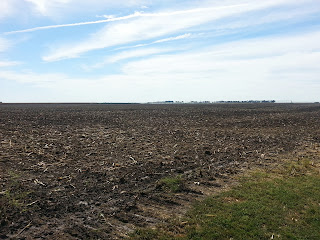 |
| Djuke's farm shop |
Spent three nights with Henk Smit and Djuke Vander Matt, who had put together some contacts for me and provided me with a base for my time in the Netherlands, which was great not to be in a cramped hotel or backpackers.
Not to mention a nice break from highway food !
These two have a real passion for what they do and are always looking for ideas to improve.
A real assest to Nuffield and I hope that their enthusiasm gets Nuffield in the Netherlands back on track with funding.
Joordens Zaden.
Ruud Jordens, Director.
John Smolenaars, Sales Manager.
Kessel NL.
Canada, Hungry, Romania , Cheqsolvakia,
This spreads the risk and offers oppotunities to rationalise freight costs. Most of the Eastern European production comes back to the Netherlands to be cleaned and packaged as each of the markets have particular requirements with regard to packaging etc. By having the product back at the Headquarters means better stock control and the ability to package as and when required.
The Beet production however needs to all go to a plant in Germany, where the only plant in the world is used to split the germs, which if not done correctly will mean a drop in performance.If the multi plasms are not seperated, the plant develops multi growing points= yield reduction. If the plasm is bruised in the process, then that too = yeild reduction.
As I saw in the Mid West during the two visits earlier in the year, the potiential for these crops to assist with nematode issues as when sown in a cover crop situation, add as much as 4000kgdm per ha to the topsoil, which greatly improvessoil health.
Much has changed in that time, particularly in the markets and the agricultural environment. Farms have increased in size and the requirement for efficiencies has led to mechanisation. Yet the fundimentals of seed production for Joorden Seeds and others like them, have remained the same.
Much of the breeding material remains the same and stood the test of time.
If we take Fodder Beet, some of the best varieties from an animal utilisation perspective are 40 and 50 years old. Whereas the newer varieties tend to have some suger beet influence and although higher in DM are very hard for the animal to eat. Liftng and chipping seems like an obvious opton.
These varieties tend to be deeper growing as well, which means they are more difficult to litf and tend to carry a lot of dirt.
The possitive aspect is that because the sugerbeet types have a greater tolerance to frost and will withstand some freezing when in the clamp.
Clamp design is particularly important, to get airflow though theclamp and the covering needs to protect from freezing but also to breathe and detter water !
There is some breeding material that was developed some years ago but not brought to the market as the demand in Netherlands was deminishing.
 |
| Ruud, John and Myself. |
Agrifirm.com
Ric is a nutritionalist with Agrifirm. With a client base of approx 100, Ric makes regular visits and provides nutritional advise based on the client needs.
The other components of the feed therefore need to deliver energy. Maize silage fills this requirement as it grows well in the area and is cheaper than fodder beet which is to costly due of the harvesting process and the potential damage to the soil.
Wheat is an option but tends to move through the cow too fast so needs to be used with a slow energy source like beet pulp or distillers grain.
Both of these products are readily available with the Distillers grain coming from Hieneken and beet pulp from the suger beet plants. They do however have a low DM and so logistically can only be used as a relatively small part of the overall diet.
A contractor is used to make the silage on farm and is also used to feed the cows. This frees up Ric to work with Agrifirm and to become more involved with off farm agriculture politics.
Jeroen is milking around 120 cows on 32ha in a barn system with two De Leval robots.
There is a premium for the milk if the cows are grazed outside, which Jeroen tried last year.
This resulted in much 25% reduction in milk solids and an increase in animal health problems.
He has decided the premium is not enough to warrent continuing and has reverted to the default system.
Jeroen is trying different crops to try to be more efficient these include peas and the really interesting one, hemp ....!









































